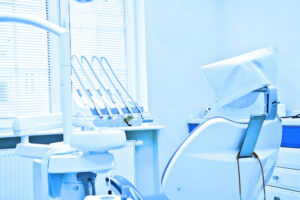Dental emergencies can be stressful and occur when you are least expecting them. Quick action is important for reducing pain, preventing further damage, and protecting your overall health. If you’re unsure about what to do in case of dental emergencies, this guide will help you take the right steps for different urgent dental situations.
Understanding Dental Emergencies
Some dental issues require immediate attention, while others issues can wait. Knowing what to do in case of dental emergencies starts with being able to recognize them.
Common Types of Dental Emergencies
- Severe toothache or pain
- Knocked-out tooth
- Chipped or broken tooth
- Loose tooth
- Swelling in the mouth or face
- Lost filling or crown
- Bleeding from the mouth that won’t stop
- Injury to the gums, lips, or cheeks
If you or your child experiences any of these issues, quick action is key.
What to Do in Case of Dental Emergencies
When faced with a dental emergency, staying calm is important. Follow these general steps to protect your teeth and health until you can reach a dentist.
Severe Toothache
A sudden, intense toothache can make it hard to think. Start by rinsing your mouth out with warm water to get rid of any food or leftovers. Use dental floss to gently remove food caught between teeth, which can sometimes relieve the pain.
H4: Managing Pain at Home
- Avoid putting aspirin directly on your gums or teeth, as it can burn the tissue.
- Put a cold pack on your cheek to make it feel better and reduce the swelling.
- For continued pain, please call your dentist right away.
Knocked-Out Tooth
A knocked-out tooth is one of the most urgent dental emergencies. You must act quickly if you want to keep the tooth.
Steps to Save the Tooth
- Don’t touch the root of the tooth; only the crown (top).
- If dirty, gently rinse with milk or saline solution—do not scrub.
- Try to reinsert the tooth in its socket, biting down gently on gauze or cloth to keep it in place.
- If not possible, keep the tooth moist in a glass of milk or in your mouth next to your cheek.
- Go to a dentist within 30 minutes for the best chance of saving the tooth.
Broken or Chipped Tooth
A broken or chipped tooth can be painful, with sharp edges cutting through your mouth.
How to Handle a Broken Tooth
If you want to clean your mouth, rinse it with warm water.
- Keep any broken pieces and take them to the dentist.
- Put an ice pack on the outside of your cheek to help with swelling.
- Cover sharp edges with dental wax or sugarless gum if you cannot get to the dentist right away.
Lost Filling or Crown
When you lose a filling or crown, it shows sensitive areas of your tooth.
Temporary Protection
- If you still have the crown, try placing it back on the tooth. To help it stay in place, use dental cement or toothpaste.
- Avoid chewing on that side of your mouth.
- Get in touch with your dentist right away to set up a repair.
Other Steps for Different Dental Emergencies
Abscess or Swelling
An abscess is a serious infection that needs prompt attention.
Identifying an Abscess
- Look for swelling, pus, and throbbing pain around the tooth or gum.
- Rinse your mouth with mild salt water several times a day to help draw the infection out.
- Avoid attempting to drain or pop the abscess on your own.
- Seek dental or medical care immediately, as untreated infections can spread.
Bleeding from the Mouth
Uncontrolled bleeding is a sign of a serious problem.
First Aid for Bleeding
- Use clean gauze or a cloth to apply gentle but firm pressure to the bleeding area.
- Keep your head elevated and avoid spitting or rinsing, as this can worsen bleeding.
- If bleeding continues for more than 10 minutes, seek emergency care.
Injury to Gums, Lips, or Cheeks
Soft tissue injuries are common, especially for children.
Managing Cuts in the Mouth
- Rinse the mouth with salt water.
- Put a cold compress on the wound to stop the bleeding and bring down the swelling.
- If the cut is deep or the bleeding will not stop, go to an urgent care center.
When to Go to the Dentist or Hospital
Sometimes you can manage dental problems at home until your dentist is available. In other cases, you need immediate medical help.
Knowing When to Seek Emergency Care
- Knocked-out or severely loose teeth
- Uncontrolled bleeding
- Severe infection with fever or facial swelling
- Difficulty breathing or swallowing
Going to an emergency dentist or the closest hospital right away if you have these symptoms is important.
Preventing Dental Emergencies
While not all emergencies can be avoided, some simple steps can lower your risk.
Protective Measures
Everyday Habits
- You shouldn’t use your teeth to open boxes or bottles.
- Wear a mouthguard when playing sports.
- Avoid chewing on ice, popcorn kernels, or hard candies.
Regular Dental Care
- Brush and floss every day.
- Get checkups and cleanings at the dentist twice a year.
- Address dental problems as soon as they appear to avoid emergencies.
Turn Panic into Action: Mastering Dental Emergencies
Knowing what to do in case of dental emergencies can make a big difference in the outcome. Acting fast to manage pain, protect teeth, and get professional help when needed is important for your oral health. By staying prepared and taking quick action, you can minimize the impact of unexpected dental problems and keep your smile healthy.




